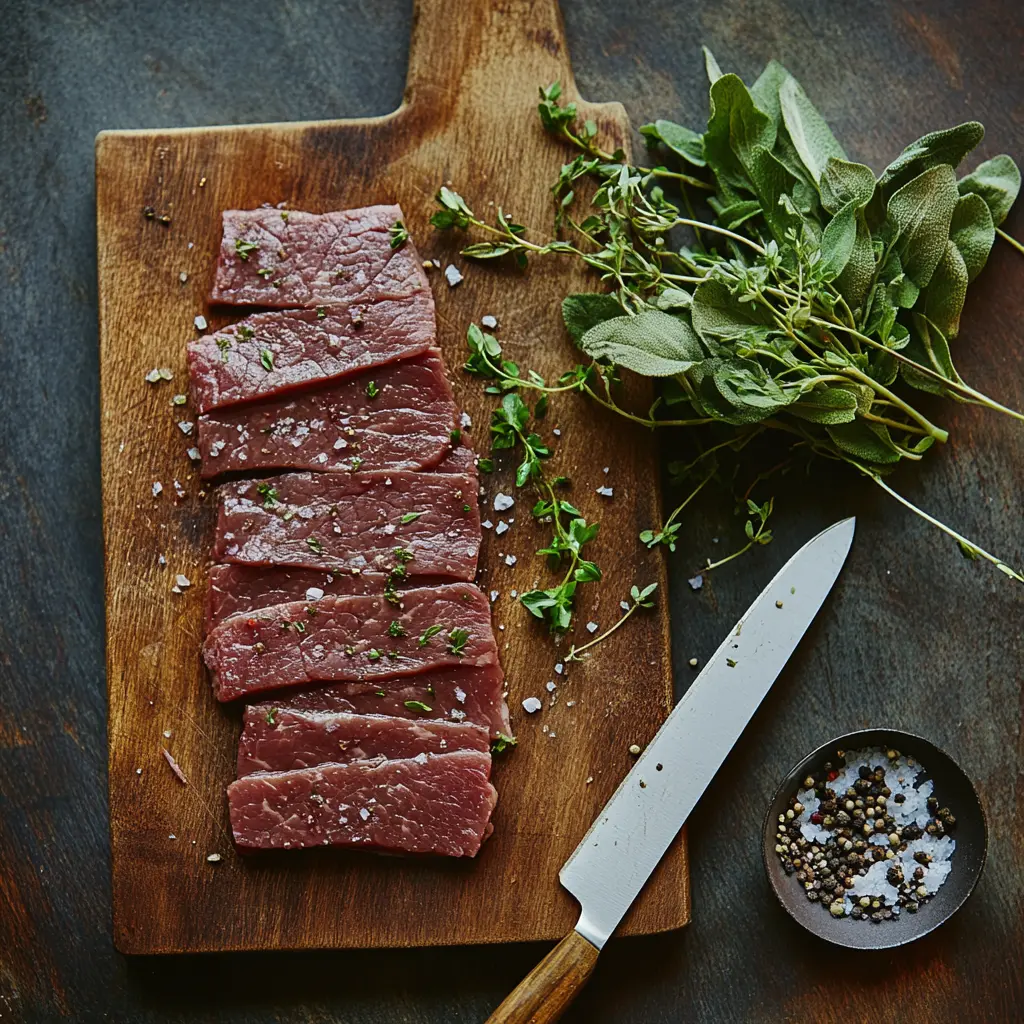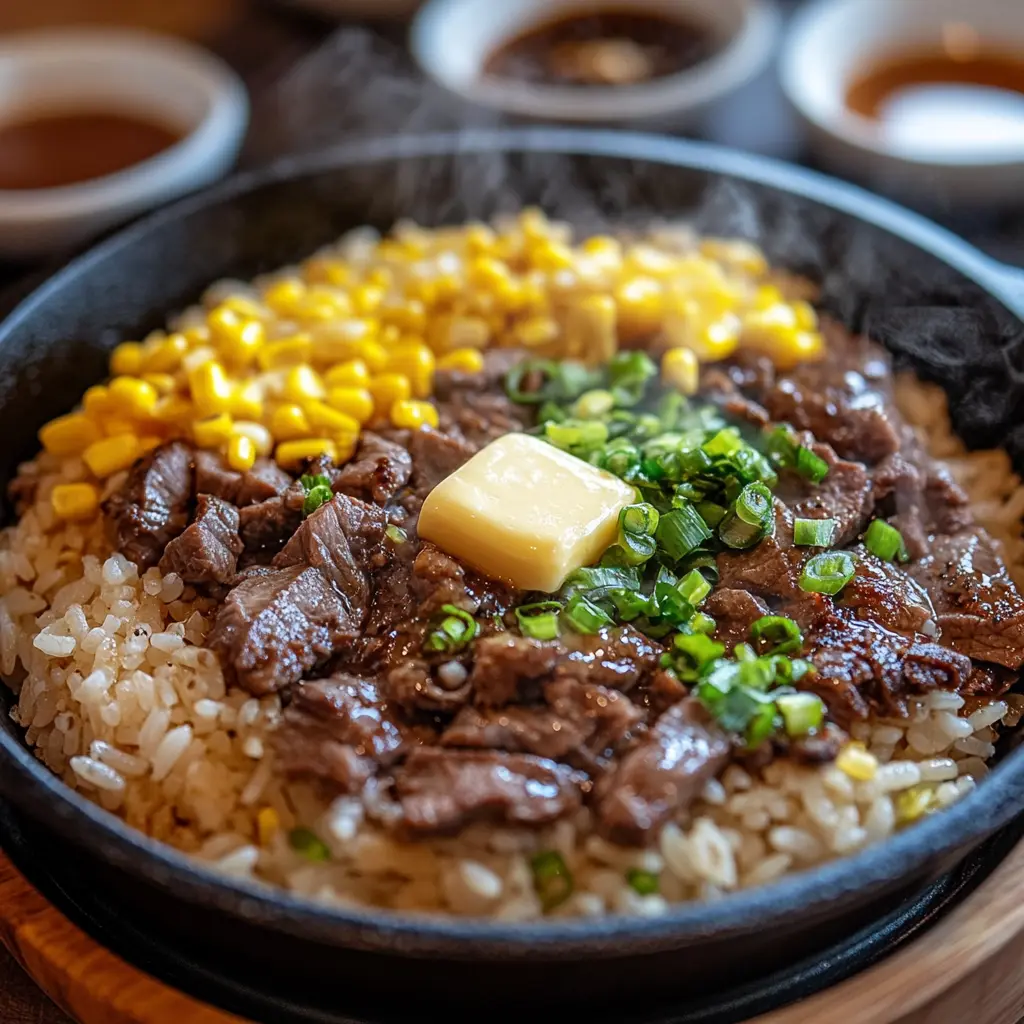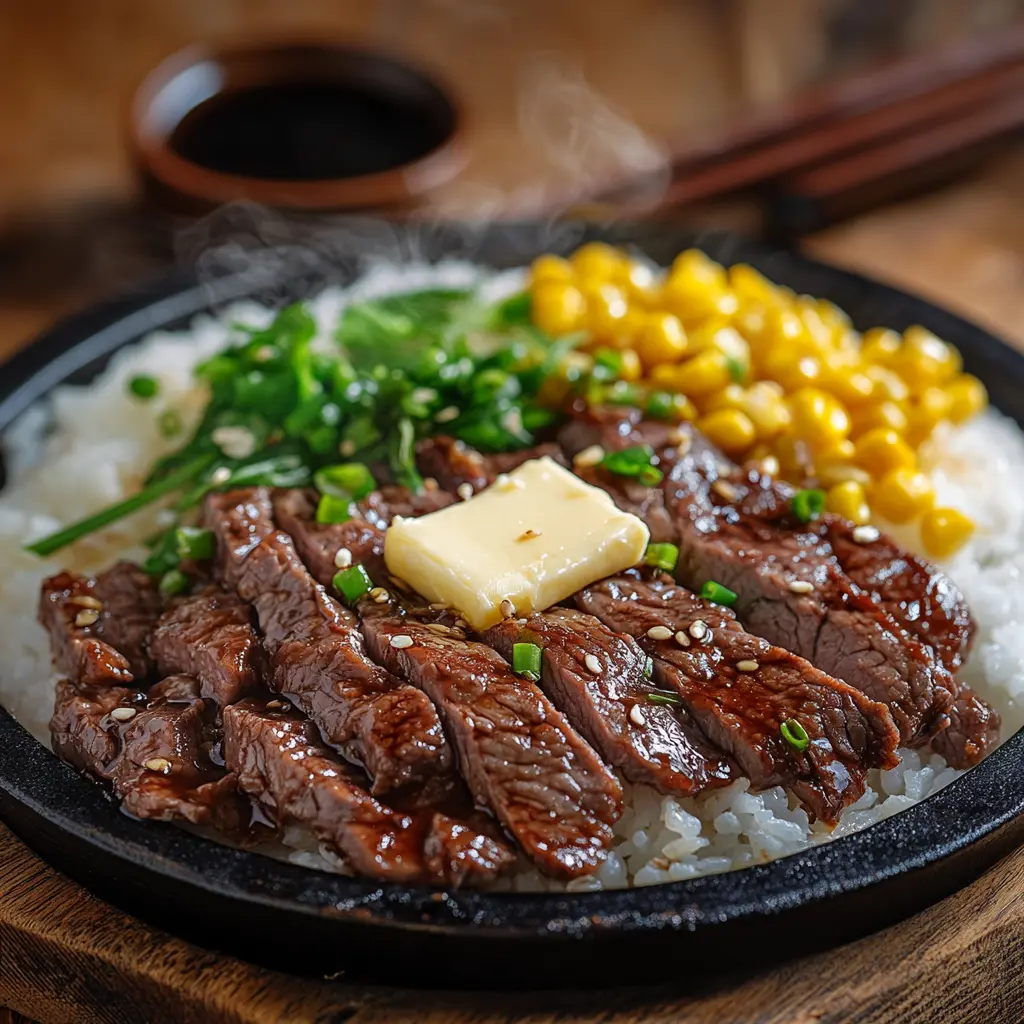If you’ve ever craved a flavorful, sizzling meal that’s both simple to prepare and bursting with unique Asian flair, then pepper lunch recipe is the answer. This dish, known for its rich aroma and vibrant presentation, is a Japanese favorite served on hot iron plates, creating a delightful blend of textures and flavors. In this article, we’ll dive into its origins, guide you step by step on how to make it, and even provide tips for customizing your own version. Ready to cook up something amazing? Let’s get started!
Part 1: Introduction to Pepper Lunch
1.1 Origin and History of Pepper Lunch
The pepper lunch recipe traces its roots back to Japan, where it was created as a fast-casual dining option. Invented by Kunio Ichinose in 1994, this dish quickly gained popularity for its simplicity and interactive dining experience. Served on sizzling hot plates, it allows diners to cook their meal to their preferred level of doneness, making every bite uniquely satisfying. Over the years, the dish has transcended borders, appearing in restaurants and homes worldwide, loved for its irresistible combination of rice, meat, and signature sauces.
1.2 Popularity Across the Globe
What makes the pepper lunch recipe a global sensation? It’s the fusion of taste and convenience. The dish caters to a variety of palates, offering options for meat lovers, seafood enthusiasts, and even vegetarians. Moreover, its sizzling presentation not only tantalizes the taste buds but also elevates the dining experience. From Tokyo to Los Angeles, pepper lunch has found its way into the hearts of foodies, making it a go-to meal for those seeking something extraordinary yet easy to prepare.
Part 2: Understanding the Pepper Lunch Recipe
2.1 Key Ingredients and Their Roles
To create an authentic pepper lunch recipe, the ingredients must be carefully chosen to ensure the right balance of flavor and texture. Here’s what you’ll need:
- Thinly sliced beef or chicken: The star of the dish, these proteins cook quickly on the hot plate, delivering a tender and juicy bite.
- Steamed white rice: Acts as the comforting base, soaking up all the delicious sauces and juices.
- Corn kernels: Add a sweet crunch that complements the savory notes.
- Scallions: Bring a touch of freshness and subtle oniony flavor.
- Butter: Melts into the rice, creating a creamy, rich taste.
- Ground black pepper: Enhances the flavors while adding a subtle kick.
- Soy-based sauces: Such as amakuchi (sweet) and karakuchi (spicy), these provide depth and a touch of umami magic.
Each ingredient plays a vital role in bringing this sizzling delight to life, making it both flavorful and visually stunning.
2.2 Essential Equipment Needed
The magic of the pepper lunch recipe lies in its cooking method. The right equipment can elevate your dish, ensuring that it matches the restaurant-quality experience.
- Cast iron skillet or hot plate: Retains heat to keep the meal sizzling for an extended time.
- Wooden spatula or chopsticks: Perfect for mixing the ingredients while ensuring the hot surface isn’t scratched.
- Rice cooker: For perfectly steamed rice, a must-have for any authentic Japanese dish.
- Small mixing bowls: Ideal for preparing and blending the sauces.
With these tools in hand, you’re ready to recreate the sizzling, aromatic delight that’s become synonymous with pepper lunch. Once everything is prepped, the process becomes seamless, and the results? Simply unforgettable.
Part 3: Step-by-Step Guide to Making Pepper Lunch at Home
Creating a sizzling pepper lunch recipe in your own kitchen is easier than you might think! With a little preparation and attention to detail, you can bring this delightful dish to life. Follow these steps to achieve a meal that’s both authentic and unforgettable.
3.1 Preparing the Beef
The choice of meat is crucial for a successful pepper lunch. Thin slices of beef or chicken work best as they cook quickly and evenly on a hot plate. Here’s how to prepare the meat:
- Select the right cut: Opt for tender cuts like sirloin, ribeye, or chicken breast. If you’re using beef, ensure it’s well-marbled for extra flavor.
- Slice thinly: Use a sharp knife to slice the meat into paper-thin strips. A pro tip is to freeze the meat for about 15 minutes beforehand to make slicing easier.
- Season lightly: Sprinkle a pinch of salt and freshly ground black pepper on the slices. Let the meat sit for about 10 minutes to absorb the seasoning.
The thin slices of meat ensure that it cooks swiftly on the sizzling skillet, locking in its natural juices and flavor.

3.2 Cooking the Rice
Rice is the foundation of this dish, and getting it right is essential. Use short-grain Japanese rice for the best results, as it offers the perfect stickiness and texture.
- Rinse thoroughly: Wash the rice under cold water until the water runs clear. This removes excess starch and prevents the rice from becoming too sticky.
- Cook to perfection: Use a rice cooker or a pot with a tight-fitting lid. Add 1 cup of water for every cup of rice, and let it simmer gently until tender.
- Fluff it up: Once cooked, fluff the rice with a fork or spatula to release any trapped steam.
The rice acts as a sponge, soaking up the buttery richness and flavorful sauces, making it an integral part of the pepper lunch recipe.
3.3 Making the Signature Sauces
The amakuchi (sweet sauce) and karakuchi (spicy sauce) are the heart of the pepper lunch experience. Here’s how to craft them:
- Amakuchi sauce:
- Combine 2 tablespoons of soy sauce, 1 tablespoon of mirin, and 1 teaspoon of sugar.
- Simmer the mixture over low heat until the sugar dissolves completely.
- Let it cool before using.
- Karakuchi sauce:
- Mix 2 tablespoons of soy sauce, 1 teaspoon of rice vinegar, and a pinch of chili flakes.
- Adjust the spice level to your liking by adding more chili flakes or a dash of sriracha.
Both sauces add layers of umami and zest, perfectly complementing the sizzling ingredients.
3.4 Assembling the Dish
Now comes the fun part—bringing everything together on a sizzling hot plate!
- Preheat the skillet: Heat your cast iron skillet or hot plate until it’s scorching hot. Add a small pat of butter and let it melt completely.
- Add the rice: Place a generous scoop of cooked rice in the center of the skillet. Create a small well in the middle for the butter to sit.
- Arrange the toppings: Neatly place the sliced meat, corn, and scallions around the rice. Sprinkle a bit of freshly ground black pepper over the entire dish.
- Sizzle and mix: Let the ingredients sizzle for a minute before pouring the sauces over the top. Use chopsticks or a wooden spatula to mix everything together, ensuring the flavors meld beautifully.
This step is where the magic happens—the combination of sizzling sounds, rich aromas, and vibrant presentation makes this dish a sensory delight. Each bite offers a perfect balance of savory meat, buttery rice, and tangy sauces.

Part 4: Tips and Variations for the Pepper Lunch Recipe
The beauty of the pepper lunch recipe lies in its versatility. With a little creativity, you can tailor this dish to suit various dietary preferences or elevate it with unique flavor twists. In this section, we’ll explore exciting tips and variations to make your pepper lunch not only delicious but also one-of-a-kind.
4.1 Vegetarian and Vegan Alternatives
For those who prefer plant-based meals, the pepper lunch recipe can be easily adapted without sacrificing flavor or excitement. Here’s how you can make a vegetarian or vegan version of this sizzling delight:
- Protein substitutes:
- Replace meat with firm tofu, tempeh, or seitan. Tofu works especially well as it absorbs the sauces beautifully.
- For a heartier option, consider jackfruit or mushrooms (such as shiitake or portobello). Their texture mimics meat, offering a satisfying bite.
- Vegetable-packed version:
- Incorporate an array of colorful vegetables like broccoli florets, bell peppers, snap peas, and carrots.
- These not only add vibrant hues to the dish but also provide a delightful crunch and nutritional boost.
- Sauce adjustments:
- Use tamari instead of soy sauce to make it gluten-free and vegan-friendly.
- Sweeten the amakuchi sauce with maple syrup or agave nectar as an alternative to sugar.
With these swaps, you can enjoy a sizzling plate of pepper lunch that’s just as hearty and flavorful, all while aligning with a plant-based lifestyle.
4.2 Enhancing Flavor Profiles
To take your pepper lunch recipe to the next level, consider these flavor-enhancing tips:
- Add spices and herbs:
- Sprinkle garlic powder, smoked paprika, or five-spice powder on the meat or tofu before cooking for an extra layer of flavor.
- Fresh herbs like cilantro or Thai basil can add a refreshing aroma and a burst of freshness.
- Experiment with proteins:
- Try shrimp, salmon, or white fish fillets for a seafood twist. Their natural sweetness pairs wonderfully with the savory sauces.
- Opt for ground chicken or turkey if you prefer lighter meats that still pack a punch.
- Infuse oils:
- Drizzle a bit of chili oil or garlic-infused olive oil over the dish right before serving. This adds an aromatic kick and a touch of heat.
- Marinate the meat:
- Marinate the protein in soy sauce, ginger, and sesame oil for at least 30 minutes before cooking. This step deepens the flavor, making every bite irresistibly tasty.
These enhancements ensure your pepper lunch stands out with bold, dynamic flavors that’ll have everyone asking for seconds.
4.3 Serving Suggestions
The way you present and serve the pepper lunch recipe can elevate the dining experience. Here are some ideas to make it extra special:
- Garnishes:
- Top the sizzling plate with toasted sesame seeds, nori strips, or a soft-cooked poached egg. These add texture and richness.
- A drizzle of spicy mayo or sriracha creates a creamy, zesty finish.
- Side dishes:
- Pair the dish with a simple miso soup, pickled vegetables, or a crisp cucumber salad to complement the savory notes.
- A side of edamame or seaweed salad adds a healthy touch while maintaining the Japanese-inspired theme.
- Beverages:
- Serve with a refreshing iced green tea or a lightly flavored sparkling water to cleanse the palate between bites.
- Family-style presentation:
- If you’re hosting a gathering, cook individual portions on smaller hot plates and serve them sizzling directly at the table.
- Alternatively, prepare a large skillet and let everyone assemble their own plates—perfect for interactive dining.
By focusing on presentation and pairing, you can transform a simple dish into an unforgettable meal that looks as good as it tastes.
4.4 Customizing for Dietary Restrictions
Whether it’s gluten sensitivity or a low-carb diet, the pepper lunch recipe can be adjusted to meet specific dietary needs:
- Gluten-free options:
- Swap soy sauce with tamari or coconut aminos.
- Check all packaged ingredients, like sauces and seasonings, to ensure they’re certified gluten-free.
- Low-carb adjustments:
- Replace rice with cauliflower rice or zucchini noodles to create a lighter, keto-friendly version.
- Increase the proportion of meat or tofu to make the dish more protein-centric.
- Lower sodium alternative:
- Use low-sodium soy sauce and reduce the amount of added salt.
- Enhance flavor with fresh herbs and spices instead of relying on sodium-heavy ingredients.
These modifications make the pepper lunch recipe accessible to a wider audience without compromising its signature taste.
4.5 Fun Variations to Try
If you’re feeling adventurous, try these creative spins on the classic recipe:
- Cheesy pepper lunch:
- Add shredded mozzarella or cheddar cheese to the dish while it’s sizzling. The cheese melts beautifully, creating a gooey, indulgent treat.
- Spicy explosion:
- Incorporate chopped fresh chilies or a dollop of gochujang (Korean chili paste) for a fiery kick that pairs beautifully with the sweet and savory sauces.
- Fusion twist:
- Give it a fusion flair by using Mexican spices like cumin and coriander or adding toppings like guacamole and salsa.
- Breakfast-style pepper lunch:
- Swap the rice for hash browns or quinoa and add a sunny-side-up egg for a hearty breakfast version.
These variations are perfect for keeping the recipe fresh and exciting, ensuring it never gets old.
FAQs About Pepper Lunch Recipe
When it comes to the pepper lunch recipe, people often have a few questions. Below are the most commonly asked ones, with detailed answers to help you perfect your dish and clear any doubts.
What is the origin of the Pepper Lunch recipe?
The pepper lunch recipe originates from Japan, where it was introduced in 1994 by Kunio Ichinose. The concept was designed as a quick and casual meal served on a sizzling hot plate, allowing diners to cook their meat to their preferred doneness. Over time, its interactive nature and rich flavors turned it into a global sensation.
Can I use other types of meat for this recipe?
Absolutely! While thinly sliced beef is traditional, you can use chicken, shrimp, or even tofu as a protein substitute. Each type of meat or protein brings its own unique flavor profile to the dish. Just make sure the slices are thin enough to cook quickly on the hot plate.
How can I make the dish less oily?
To reduce the oiliness, try the following tips:
- Use a non-stick skillet or grill to minimize the need for added butter or oil.
- Opt for lean cuts of meat and trim any excess fat.
- Replace butter with a small amount of olive oil or omit it entirely for a lighter version.
These adjustments will help you enjoy a healthier version of the pepper lunch recipe without compromising its taste.
Is Pepper Lunch gluten-free?
The recipe can be made gluten-free with simple swaps. Replace soy sauce with tamari or coconut aminos, and double-check that all other ingredients, like mirin and spices, are certified gluten-free. By making these adjustments, you can enjoy a gluten-free version of this sizzling delight.
Can I prepare Pepper Lunch ingredients ahead of time?
Yes! You can save time by prepping the components in advance:
- Slice and season the meat or tofu the night before and store it in the refrigerator.
- Cook the rice ahead of time and reheat it just before assembling the dish.
- Mix the sauces and keep them in airtight containers.
By preparing ahead, you can whip up the pepper lunch recipe in minutes, perfect for a quick and delicious meal.
How do I store leftovers?
If you have any leftovers, follow these tips to store them properly:
- Separate components: Keep the rice, meat, and vegetables in separate containers to maintain their texture and freshness.
- Refrigerate promptly: Store the leftovers in an airtight container and refrigerate within two hours of cooking.
- Reheat carefully: Use a skillet or microwave to reheat the components individually, ensuring even heating without overcooking.
Consume leftovers within 2-3 days for the best taste and quality.
What is Pepper Lunch made of?
The pepper lunch recipe is made up of a few simple yet flavorful ingredients that come together to create a delightful sizzling dish. The main components include:
- Thinly sliced beef or chicken: The protein of choice, often lightly seasoned.
- Steamed white rice: A fluffy base that soaks up all the juices and sauces.
- Corn kernels: For a sweet, crunchy texture.
- Scallions and butter: Adding freshness and creaminess.
- Signature sauces: Amakuchi (sweet sauce) and karakuchi (spicy sauce) bring bold flavors to the dish.
- Ground black pepper: Highlighting the signature flavor of the meal.
The simplicity of these ingredients, combined with the cooking technique, makes this dish both versatile and irresistible.
What is the sweet sauce at Pepper Lunch?
The sweet sauce served with the pepper lunch recipe is called Amakuchi sauce. It’s a soy-based sauce with a slightly sweet and tangy flavor profile, often made by combining:
- Soy sauce
- Mirin (sweet rice wine)
- Sugar
This sauce enhances the natural flavors of the dish, adding a subtle sweetness that balances the savoriness of the meat and rice.
Is Pepper Lunch Japanese or Korean?
Pepper Lunch is a Japanese dish. It was created in Japan by Kunio Ichinose in 1994 as a fast-casual dining concept. Although Korean cuisine features sizzling dishes as well, Pepper Lunch specifically originates from Japan and is known for its interactive dining experience on hot plates.
Why does Pepper Lunch taste so good?
The incredible flavor of pepper lunch comes from its unique cooking method and perfectly balanced ingredients. Here’s why it’s so irresistible:
- Sizzling hot plate: The dish is cooked and served on a hot iron plate, locking in the juices and creating a caramelized crust on the meat and rice.
- Freshly cooked meat: The interactive element of cooking your protein to your liking ensures maximum freshness and flavor.
- Signature sauces: The blend of sweet and savory from amakuchi and karakuchi sauces adds a complex umami depth.
- Butter and pepper: These simple additions elevate the dish with creamy richness and a hint of spice.
- Interactive dining experience: The process of mixing and customizing your meal makes every bite uniquely delicious.
It’s this combination of taste, texture, and aroma that makes pepper lunch a culinary standout.
Conclusion
The pepper lunch recipe is a perfect example of how simplicity and ingenuity can create a dish that’s not only flavorful but also fun to prepare and enjoy. Originating from Japan, this sizzling delight has captured the hearts and taste buds of food lovers worldwide. Its combination of tender meat, buttery rice, vibrant toppings, and signature sauces makes it a meal that’s easy to customize and impossible to resist.
Whether you’re cooking for yourself, your family, or a gathering of friends, the pepper lunch recipe offers a memorable dining experience. From its sizzling presentation to the burst of flavors in every bite, it’s a dish that transforms ordinary ingredients into something extraordinary. With the tips, variations, and FAQs covered in this guide, you’re now fully equipped to bring this iconic meal to life in your own kitchen.
So, gather your ingredients, heat up your skillet, and let the magic of pepper lunch take over your table. Enjoy the journey of cooking and savor every mouthwatering moment!

